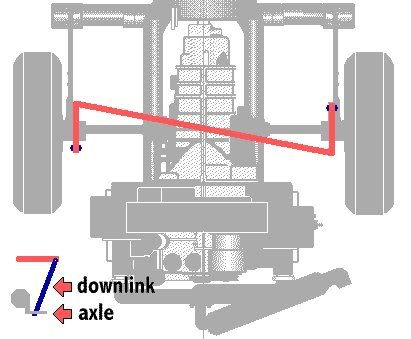Hi,
I enjoy these threads you have started on the handling of our beloved car.
Short question: does the Z-bar in any way function differently than the camber compensator, since you , qoute "fabricating their own Z-bars, which worked better than the leaf-spring camber compensator! "
[u][b]Found this on the VZi forums:[/b][/u]
"The Z-bar is what VW calls an "equalizer spring" and is not obvious in its operation. Cars fitted with these have reduced over-steer tendencies and therefore more neutral handling characteristics - Which was what VW was trying to achieve. IRS vehicles, on the other hand have, (IMO) too much under-steer but, in the minds of manufacturers, this is inherently more safe (I don't necessarily agree with that policy).
Anyway, how the swing axle Z-bar works is like this: VW softened the rear torsion bars, so as to make the car roll more, during cornering. By doing this, the cornering forces are transferred to the front axle which would then 'break away' sooner. This increased under-steer, prevents the conditions for 'wheel tuck' to occur, except in (possibly) the most extreme of circumstances.
The beneficial by-product of the softer rear bars is that of increased ride comfort. The Z-bar, which is actually a long torsion bar, replaces the force lost by the softer main suspension and only comes into effect when the vehicle is heavily laden or when the suspension is working harder. This actually creates another beneficial by-product of 'progressive suspension'. However, when the car is cornering, the Z-bar has no effect whatsoever, allowing the softer rear torsion bars to perform as described above. That is why the left & right links, on the Z-bar, operate in opposite directions.
The camber compensator was originally designed for non Z-bar VW's & Porsche's. What it does is cradle the axle tubes and physically prevents the wheels from 'jacking up'; a condition liable to produce wheel tuck, which normally results in roll-over. However, unlike the Z-bar system, you could have the situation whereby only three wheels are on the ground (during cornering) plus the under-steer effect is not inherently there! The CC also prevents the same 'jacking up' condition occurring at high speed, when the Bug has a tendency to raise up. This is a major factor affecting the instability often felt by drivers on Motorways, especially when passing other vehicles or in high winds. This is also the area which the Z-bar system does not appear to address.
However, some people have said that they can create the CC effect with the Z-bar by removing the nut and washer at the end of the link rods, on either side, and adding spacers, washers or rubber blocks so as to reduce the in-built free-play in the system. This means that the progressive nature of the Z-bar will come into effect sooner than VW intended while still allowing the car to produce the under-steer which gives it that more neutral handling. However, it is likely that in reducing the free-play, the Z-bar may exert some force on the suspension, at some point, during roll, but I am not certain about that.
I don't know if I have been particularly clear in this explanation, but I hope I have helped somehow. "
http://www.volkszone.com/VZi/showthread.php?t=180244[u][/u]


